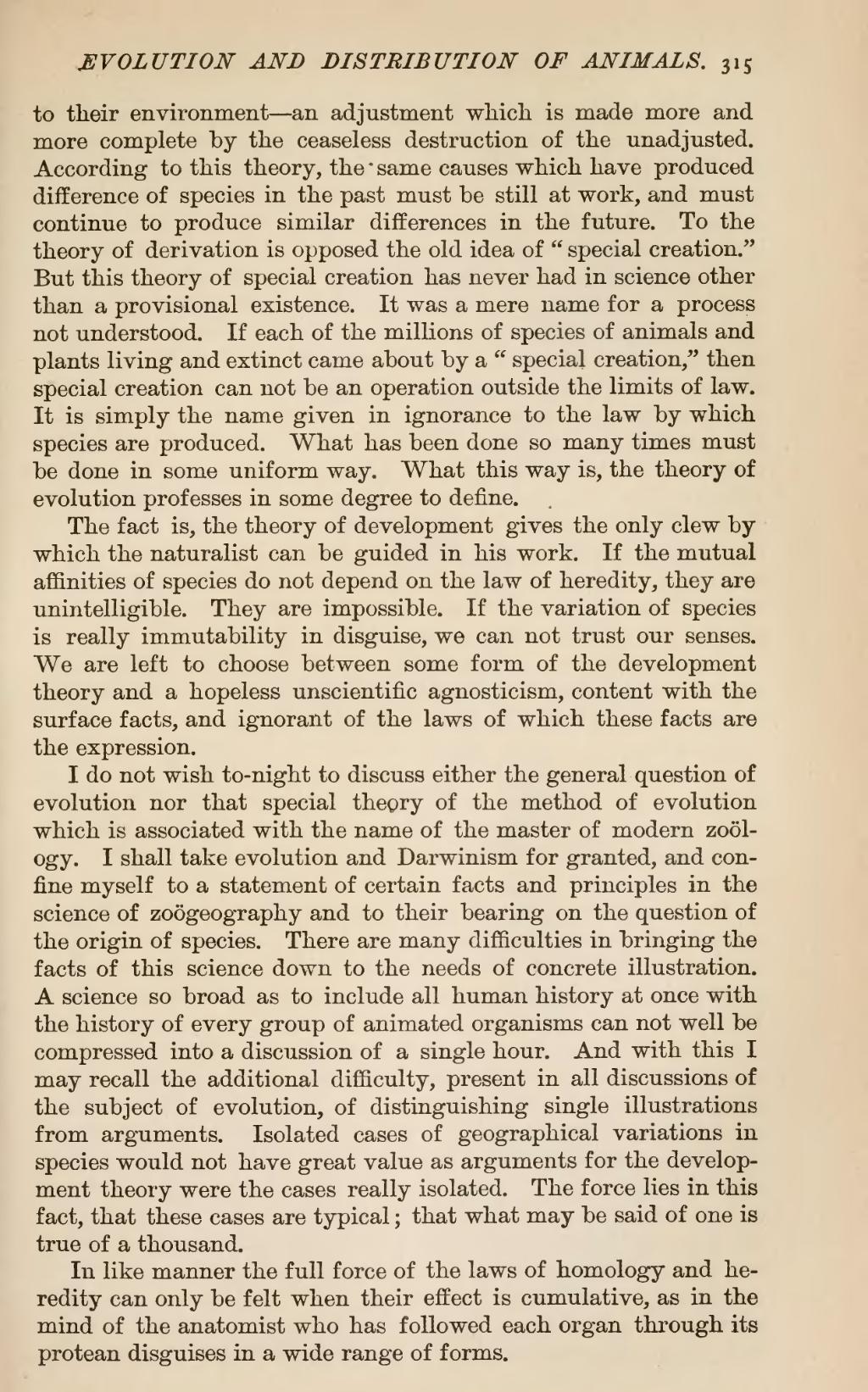to their environment—an adjustment which is made more and more complete by the ceaseless destruction of the unadjusted. According to this theory, the * same causes which have produced difference of species in the past must be still at work, and must continue to produce similar differences in the future. To the theory of derivation is opposed the old idea of "special creation." But this theory of special creation has never had in science other than a provisional existence. It was a mere name for a process not understood. If each of the millions of species of animals and plants living and extinct came about by a "special creation," then special creation can not be an operation outside the limits of law. It is simply the name given in ignorance to the law by which species are produced. What has been done so many times must be done in some uniform way. What this way is, the theory of evolution professes in some degree to define.
The fact is, the theory of development gives the only clew by which the naturalist can be guided in his work. If the mutual affinities of species do not depend on the law of heredity, they are unintelligible. They are impossible. If the variation of species is really immutability in disguise, we can not trust our senses. We are left to choose between some form of the development theory and a hopeless unscientific agnosticism, content with the surface facts, and ignorant of the laws of which these facts are the expression.
I do not wish to-night to discuss either the general question of evolution nor that special theory of the method of evolution which is associated with the name of the master of modern zoölogy. I shall take evolution and Darwinism for granted, and confine myself to a statement of certain facts and principles in the science of zoögeography and to their bearing on the question of the origin of species. There are many difficulties in bringing the facts of this science down to the needs of concrete illustration. A science so broad as to include all human history at once with the history of every group of animated organisms can not well be compressed into a discussion of a single hour. And with this I may recall the additional difficulty, present in all discussions of the subject of evolution, of distinguishing single illustrations from arguments. Isolated cases of geographical variations in species would not have great value as arguments for the development theory were the cases really isolated. The force lies in this fact, that these cases are typical; that what may be said of one is true of a thousand.
In like manner the full force of the laws of homology and heredity can only be felt when their effect is cumulative, as in the mind of the anatomist who has followed each organ through its protean disguises in a wide range of forms.
